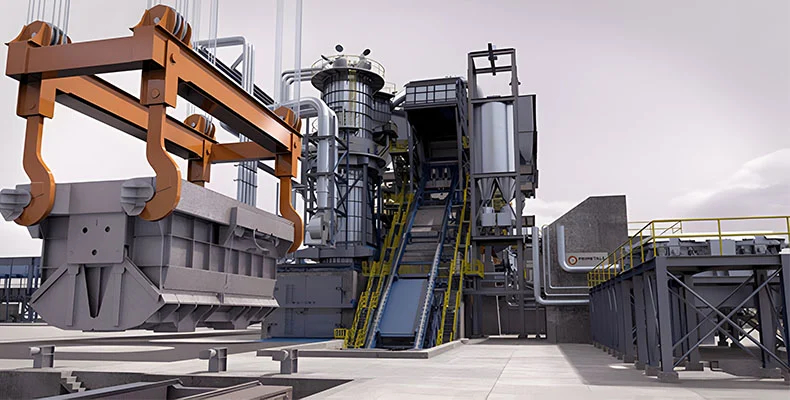Friction Springs Ensure Protection of Steel Scrap Collection System for Electric Arc Furnace
With many steel producers reducing costs and increasing the sustainability of their operations, a common strategy is to implement technologies that reduce their energy consumption. One steel producer is setting new sustainability standards by upgrading its furnaces.
Compared to conventional methods of recycling steel scrap, which involve an energy-intensive electric arc furnace (EAF), the steel manufacturer’s upgraded EAF uses significantly less electricity thanks to its integrated heating system that preheats the scrap, reducing operating costs and CO2 emissions. Scrap is preheated via off-gas from the steel production process, lowering the energy required to melt it.
Friction Springs Are Key to Success
The recycling process begins with loading steel scrap into a container that is part of an automatic scrap charging system. Once filled, the container is lifted to the top of the furnace, and the scrap falls into a retention system located directly above the scrap melt. The system preheats the scrap both directly and via the integrated heat recovery system.
The retention system consists of six opposing fingers that each feature a Ringfeder friction spring buffer at their outer ends. When the scrap is heated to 600°C, the finger system opens, and the scrap falls into the melt. Our friction spring buffers are crucial in this system because they provide structural flexibility, protecting the system from damage when falling scrap impacts the fingers.
Initially, the finger design consisted of Ringfeder 24201 spring dampers with a maximum force of 1,000 kilonewtons (kN), enabling a maximum operating load of 740 kN, spring travel of 62 millimeters (mm), 100-kN preload and 47.5-kilojoule (kJ) capacity. In case the impact energy was higher than anticipated, the fingers were also designed to allow the addition of a Ringfeder 19600 parallel spring. Upon further calculations, however, the actual energy absorption was significantly lower than expected. The final design iteration now includes both 24201 and 19600 springs connected in series, creating a stepped spring characteristic curve.
Since initial operation in 2013, the new furnace system has been operating successfully, thanks to our customer support and high-performance friction springs. Compared to traditional arc furnaces, the EAF has unlocked many benefits, including 30% less CO2 emissions per ton of raw steel and a 20% increase in usable scrap.
Learn more on our product page.

